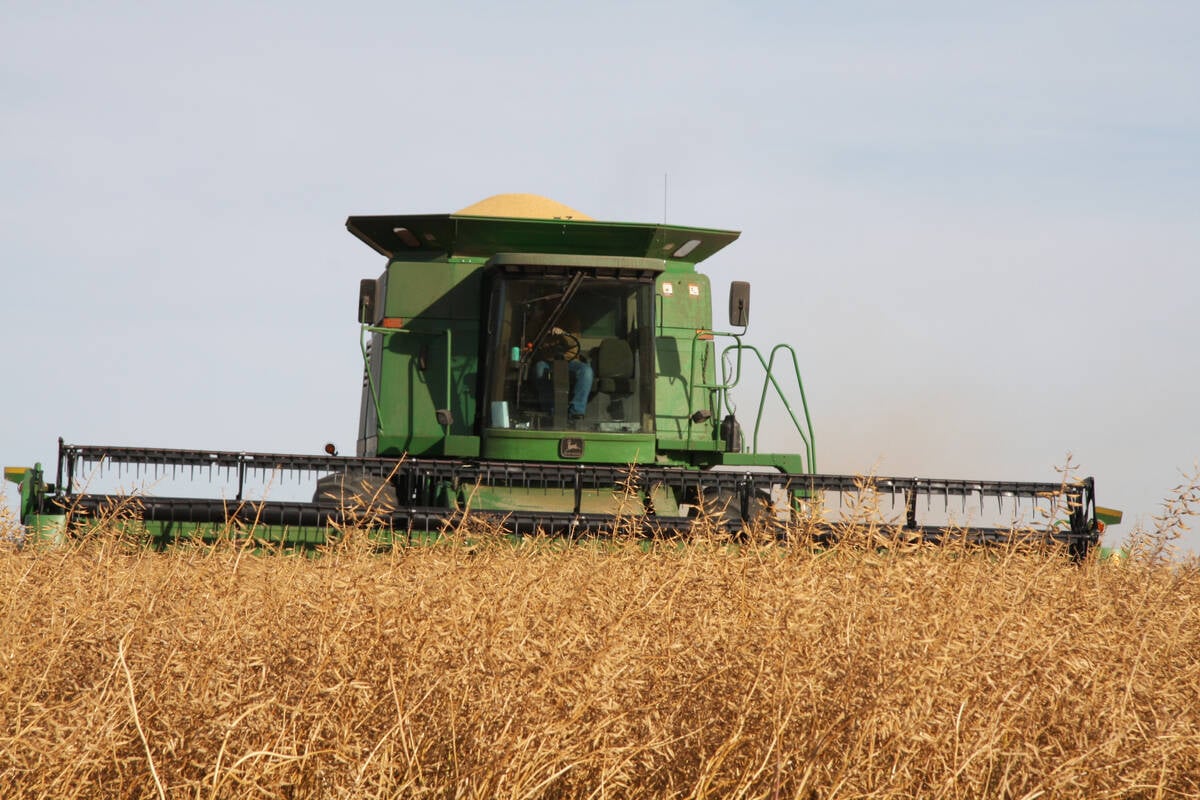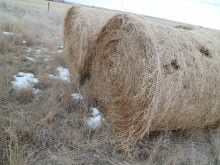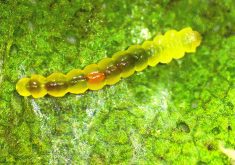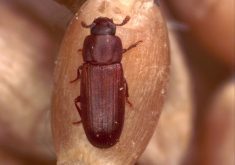Promoting beneficial insects | Industry officials advise farmers to spray only when economically necessary
John Gavloski pointed at a grey caterpillar resting on a round, plastic dish the size of a drink coaster.
The caterpillar was easy to notice. Harder to spot were the dozens of tiny, grey larvae, smaller than a flaxseed, that were emerging from the larger insect.
Gavloski, an entomologist with Manitoba Agriculture, said the diminutive and wiggling larvae are an example of beneficial insects defeating a crop pest.
“Right now, there are probably 150 little parasitic wasp larvae that have emerged from this one cabbage looper,” Gavloski said during CanoLAB, a Canola Council of Canada and Manitoba Canola Growers Association workshop held in Brandon in mid-March.
Read Also

Mustard processor expands in southern Alberta
$30 million expansion for southern Alberta mustard facility adds milling capacity to largest supplier in the world of value-added milled mustard products
A female wasp had laid an egg inside the cabbage looper, which is a caterpillar that feeds on vegetables and brassica crops. Once inside the looper, the egg divided into more than 100 eggs.
“Each one of these (larvae) will become an adult wasp and they will mate and lay eggs into other (pests),” Gavloski said.
“(The wasps) can build up quickly and they can make a significant impact on our pest populations.”
Other beneficial insects include damsel bugs, pirate bugs and hoverflies.
Canola growers might not have to spray for pests such as lygus bugs and diamondback moths if these predators and parasitoids are left to grow.
“(We) have to be careful that we’re not doing more harm than good when we use an insecticide,” Gavloski said.
An insecticide will kill the predators and parasites that attack crop pests and permit pests to flourish in the future.
“They (predators and parasitoids) are what’s keeping your pest from being a problem on a more regular basis,” Gavloski said.
“If they are doing a good job and you don’t have a crop pest at an economic threshold, you’re better off leaving things alone.”
Greg Sekulic, a canola council agronomist in the Peace River region, said he’s been sharing a similar message with canola growers in Alberta.
Beneficial insects weren’t part of the agronomic conversation when Sekulic graduated from university 15 years ago. Nowadays, growers are curious.
“If I have 11 lygus bugs in my (sweep) but I also caught two lace-wing larvae, do I subtract that from the total?” Sekulic said.
“I’m really encouraged by the change in the conversation…. I feel like (the) message has been gaining traction over the last several years.”
However, Sekulic said more education work needs to be done.
“The biggest message I try to get out to growers in my region … is absolutely never spray a prophylactic application of an insecticide. Always be over an economic threshold.”
He said scientists have established economic population thresholds for canola pests such as lygus bugs and Bertha armyworms, but the thresholds for other pests are less distinct.
“We aren’t quite that specific with a lot of our other pests.”
However, a good rule of thumb is not to spray unless a pest insect is definitely a problem,.
“What we absolutely do know is spraying below those points, there’s no economic return whatsoever,” he said.
“It is literally a waste of money and does have negative implications for dozens of species: the spiders, the dozens of species of beetles … and the ones everyone is aware of, the ladybugs and lace-wings.”
Paul Gregory, a farmer and beekeeper near Fisher Branch, Man., said reducing insecticide use is an excellent idea.
He said research and anecdotal evidence indicates that pollinators boost canola yields.
“When you’re knocking off your pollinators, you’re decreasing your yield and your oil content,” said. Gregory, who also owns Interlake Forage Seeds.
“We do see this on yield monitors: different local growers say the canola close to your bee yard has yielded better than half a mile away. You see that pollination gradient.”
Gavloski has posted a fact sheet on the Manitoba Agriculture website with photos of beneficial insects that growers could use to identify beneficial insects.
He said spraying might not be a good idea if farmers find a healthy population of beneficial insects in their fields.
“Everyone knows what a ladybug looks like, but a lot of people don’t know what the juveniles look like for lady beetles,” Gavloski said.
“They look like tiny black, alligator shaped things.”
For more information, visit www.gov.mb.ca/agriculture/crops/insects.


















